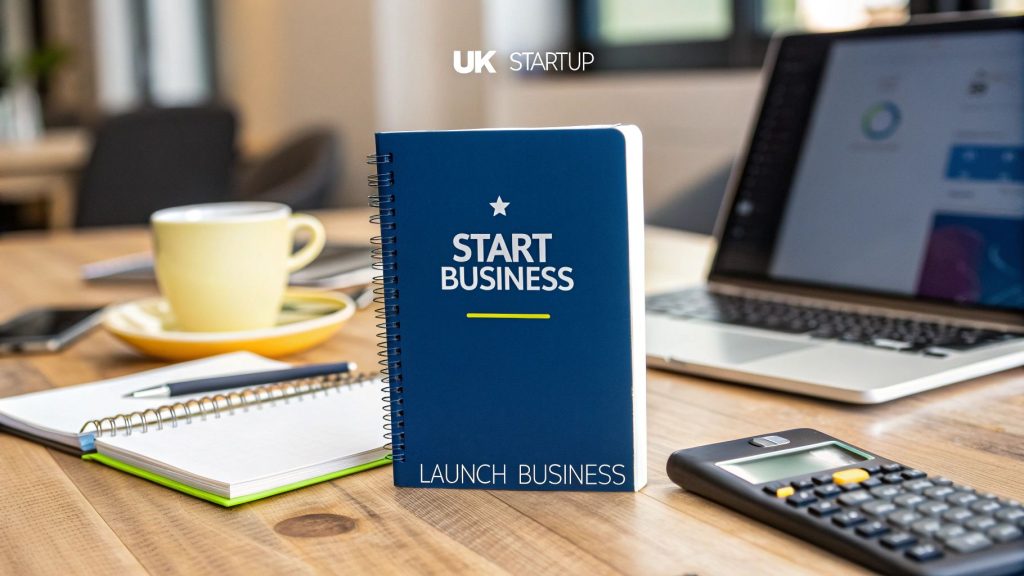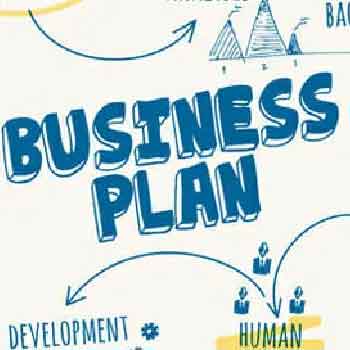10 Crucial Pieces of Business Advice for Startups in 2025
Business Advice for Startups – Launching a startup is a thrilling, yet daunting, endeavour. The journey from a promising idea to a profitable business is fraught with challenges, but the right guidance can illuminate the path and help you navigate the inevitable obstacles. Many founders, driven by passion and optimism, inadvertently stumble into common pitfalls that could have been sidestepped with strategic foresight and practical knowledge. This is where targeted, actionable business advice for startups becomes not just helpful, but essential for survival and growth.
This article cuts through the noise and generic encouragement to offer a blueprint for building a resilient enterprise. We have curated 10 high-impact strategies, grounded in the real-world experiences of successful founders and seasoned investors. Forget abstract theories; each point is a practical directive designed for immediate implementation.
You will learn how to rigorously validate your business concept before committing significant resources, why focusing on a single, well-defined customer segment is critical for early traction, and the importance of achieving product-market fit before attempting to scale. We will also cover crucial operational pillars, such as ruthless cash flow management and the art of hiring deliberately. This guide is your framework for making smarter decisions, avoiding costly mistakes, and systematically building a venture poised for long-term success.
1. Validate Your Idea Before Building
One of the most crucial pieces of business advice for startups is to avoid building something nobody wants. Market validation is the process of testing your concept with real potential customers before investing significant time and money into development. The core principle, popularised by Eric Ries’s The Lean Startup, is to prove that a paying market exists for your solution before you commit fully to building it.

This approach saves invaluable resources by steering you away from flawed assumptions. Dropbox famously validated its file-syncing idea with a simple explainer video, which generated 75,000 signups overnight. Buffer used a two-page website to collect emails, proving interest in a social media scheduling tool before a single line of code was written.
How to Validate Your Idea
True validation isn’t about asking friends if they like your idea; it’s about gathering objective evidence of demand.
- Conduct Customer Interviews: Speak with at least 50-100 people in your target demographic. Use “The Mom Test” approach by asking about their current problems and workflows, not hypothetically about your solution. For example, instead of “Would you use an app to manage your recipes?”, ask “How do you currently manage your recipes? What’s the most frustrating part of that process?”.
- Look for Makeshift Solutions: The best sign of a real problem is when people are already trying to solve it themselves using a clunky mix of spreadsheets, manual processes, or other tools. Before project management tools like Asana and Trello were mainstream, teams often used a complex web of Excel files and email chains to track tasks—a clear signal of an unmet need.
- Test Willingness to Pay: Interest is cheap, but a financial commitment is a powerful signal. You can create a simple landing page and offer a pre-order discount or ask for a small deposit. If you’re building a SaaS tool for designers, you could create a landing page with a “Pre-order now for 50% off the first year” button. Even if you don’t process payments, tracking the number of clicks on that button gives you strong data.
This process is fundamental to creating a sustainable enterprise. By confirming demand early, you can refine your concept using real-world feedback, a key step when you start to map out your business model.
2. Focus on One Customer Segment Initially
One of the most potent pieces of business advice for startups is to resist the temptation to be everything to everyone. Instead, the goal is to dominate a small, specific market first. This means identifying a single type of customer, deeply understanding their acute pain points, and becoming the undisputed best solution for that niche before attempting to expand.
This focused strategy, popularised by thinkers like Peter Thiel in Zero to One, allows a startup to concentrate its limited resources. Facebook famously began by serving only Harvard students, then Ivy League universities, before opening to the world. Similarly, Amazon started exclusively as an online bookseller, mastering that vertical before expanding to become the “everything store.” This approach creates intense product-market fit and powerful word-of-mouth within a tight-knit community.
How to Focus on a Niche
Choosing your initial beachhead market is a strategic decision that can define your startup’s trajectory.
- Identify High-Pain Segments: Look for a group of customers who are not just inconvenienced but are actively and desperately seeking a better solution. Their high motivation makes them ideal early adopters. For instance, a new invoicing software might find that freelance graphic designers have a much higher pain point with complex accounting software than small retail shops that use a simple POS system.
- Create a Detailed Persona: Go beyond demographics. Build a detailed persona document for your ideal customer, outlining their goals, daily workflows, fears, and the tools they currently use. This keeps your team laser-focused. For example, your persona “Designer Dave” might be a 32-year-old freelance UI designer who struggles to track billable hours across multiple projects and dreads creating invoices at the end of the month.
- Dominate, Then Expand: The goal is to become the clear market leader in your chosen niche. Once you have achieved this and built a loyal user base, you can strategically plan your expansion into adjacent markets that share similar problems. After becoming the go-to tool for freelance designers, your invoicing software could then expand to serve freelance writers, and then small agencies.
This methodical approach allows you to build a strong foundation. By proving your value to one group first, you create a powerful case study and a repeatable model for future growth, a vital step as you begin to scale your operations.
3. Build a Strong Co-Founder Relationship
A crucial piece of business advice for startups is to treat your co-founder relationship like a marriage. It demands immense trust, open communication, and a shared vision. While startups with two or three co-founders often outperform solo founders, Y Combinator co-founder Paul Graham notes that co-founder conflict is a primary cause of early-stage failure. The foundation of your company is not just the idea, but the team that executes it.
Iconic partnerships like Steve Jobs and Steve Wozniak at Apple demonstrate the power of complementary skills, combining visionary business acumen with technical genius. Similarly, Airbnb’s success was built on the combined strengths of Brian Chesky (vision/design), Joe Gebbia (design/product), and Nathan Blecharczyk (engineering). Their success was a direct result of a resilient and well-defined working relationship.
How to Build a Strong Co-Founder Relationship
A solid partnership is built deliberately through clear agreements and proactive communication, not just friendship and hope.
- “Date” Before You Marry: Before committing, work on a small, time-boxed project together. This trial run reveals work ethics, communication styles, and how you handle pressure before the stakes are high. For example, you could collaborate on building a simple landing page for your idea or co-authoring a detailed market research report over a weekend.
- Formalise the Partnership: Put everything in writing. A comprehensive co-founder agreement should clearly define roles, responsibilities, equity splits, and the decision-making process. Crucially, it must include a 4-year vesting schedule with a 1-year cliff to protect the company if someone leaves early. This means a co-founder must stay for at least one year to earn any equity, and they earn their full amount over four years.
- Discuss the Difficult Scenarios: Have uncomfortable conversations from day one. What happens if someone isn’t performing, gets seriously ill, or wants to exit? Agreeing on these scenarios now prevents destructive conflicts later. For example, explicitly agree on a process for one co-founder to buy out the other, including how the company valuation will be determined at that time.
Building this foundation is not about a lack of trust; it’s about creating a robust framework that allows trust to flourish. This structure provides the stability needed to navigate the inevitable challenges of growing your startup team.
4. Achieve Product-Market Fit Before Scaling
One of the most critical pieces of business advice for startups is to resist the urge to scale prematurely. Product-market fit (PMF), a term popularised by Marc Andreessen, describes the point where you have built a product that satisfies a strong market demand. It’s the magical moment when your solution resonates so deeply with customers that growth starts happening organically, driven by word-of-mouth and high retention.
Scaling marketing spend, hiring, or operations before reaching this stage is a common and often fatal mistake. It’s like pouring fuel on a fire that hasn’t been properly lit; you burn through resources without generating sustainable heat. Superhuman, an email client, famously engineered its path to PMF by relentlessly surveying users until over 40% stated they would be “very disappointed” if the product disappeared. Only then did they focus on growth.
How to Achieve and Measure Product-Market Fit
Achieving PMF is an iterative process of listening to your early adopters and refining your product to solve their core problems better than any alternative.
- Use the Sean Ellis Test: The “very disappointed” survey is the gold standard for measuring PMF. Created by growth expert Sean Ellis, it provides a clear, quantitative benchmark. If you are not hitting that 40% threshold, segment the users who love your product and find out what makes them different. For example, you might discover that while only 20% of all users would be “very disappointed,” this figure jumps to 60% among users who work in teams of 5-10 people. This insight tells you exactly where your PMF is strongest.
- Track Cohort Retention: Are your customers sticking around? Analyse user cohorts to see if people who signed up 30, 60, or 90 days ago are still active. A flattening retention curve is a strong indicator of PMF. For a mobile app, this might look like: of the users who signed up in January, 30% are still active after one month, and 25% are still active after three months. That 25% level holding steady suggests you have a core, retained user base.
- Look for Organic Growth: Are you seeing unprompted referrals, positive social media mentions, or users actively recommending you without incentives? These are powerful signals that you’ve built something people genuinely value. A practical example is a user tweeting, “I can’t imagine my workflow without @YourProduct anymore. It’s a game-changer.”
- Be Willing to Pivot: Instagram famously found PMF by stripping away all features except photo-sharing after realising that’s what users loved most. Don’t be afraid to make bold changes based on user feedback. Slack started as a gaming company called Glitch; when the game failed, they realised the internal communication tool they’d built was far more valuable and pivoted to focus on that.
5. Manage Cash Flow Ruthlessly
Profitability on paper means little if your business runs out of cash. This is a critical piece of business advice for startups, as poor cash flow management is one of the leading causes of failure. It is the practice of meticulously monitoring, analysing, and optimising the net amount of money flowing in and out of your company, ensuring you can always pay your bills on time.

This discipline prevents even profitable businesses from failing due to liquidity issues. The goal is to maintain a healthy runway, the amount of time your startup can operate before it runs out of money. During the 2008 financial crisis, Airbnb famously extended its runway by selling novelty cereal boxes, generating $30,000 in crucial capital. Similarly, Basecamp (formerly 37signals) has remained profitable for over two decades by fiercely controlling its burn rate.
How to Manage Your Cash Flow
Effective cash flow management requires discipline, forecasting, and strategic decision-making. It’s about creating a financial buffer to weather unexpected challenges and seize opportunities.
- Know Your Numbers Cold: Calculate your monthly burn rate (total cash spent) and your runway (total cash divided by burn rate) at all times. For example, if you have £100,000 in the bank and your monthly expenses (salaries, rent, software) total £10,000, your burn rate is £10k/month and your runway is 10 months.
- Create a Rolling Forecast: Develop a 13-week rolling cash flow forecast. This short-term view helps you anticipate crunches and make proactive decisions rather than reactive ones. For instance, your forecast might show that a large annual software renewal is due in week 8, alerting you to ensure sufficient funds are available and avoiding a surprise expense.
- Optimise Payment Cycles: Negotiate longer payment terms with your suppliers (e.g., net 60 or net 90) while encouraging customers to pay you faster (e.g., net 30 or upfront payments). A practical example is offering a 5% discount to SaaS customers who choose to pay for an entire year upfront instead of monthly.
- Justify Every Expense: Use zero-based budgeting, where every expense must be justified from scratch for each new period. This forces you to distinguish between “nice-to-have” and “need-to-have” expenditures, cutting out unnecessary costs. Before buying a new £50/month software tool, you’d have to prove it solves a critical problem that can’t be addressed with existing, cheaper tools.
By treating cash as your most vital resource, you give your startup the stability it needs to survive and grow. Mastering these techniques is fundamental, and you can explore more ways to improve cash flow here.
6. Hire Slowly and Deliberately
One of the most impactful pieces of business advice for startups is to treat every early hire as a foundational decision. Your first ten employees have an outsized influence on your company’s culture, capabilities, and ultimate trajectory. The mantra “hire slow, fire fast” means taking exceptional care to find the right people and being decisive when a hire isn’t working out.
This deliberate approach, championed by leaders like Reed Hastings and Ben Horowitz, prevents costly mistakes. Early-stage startups need versatile, self-directed individuals who thrive in ambiguity, not specialists who require established structures. Automattic, the company behind WordPress, famously uses paid trial projects to see how candidates perform in a real work environment before making an offer. Similarly, Netflix’s “keeper test” asks managers if they would fight to keep an employee, ensuring a high-performance culture.
How to Hire Deliberately
A rigorous process isn’t about bureaucracy; it’s about reducing risk and increasing your odds of success.
- Wait for Acute Pain: Don’t hire to fill a seat. Wait until the absence of a specific role is causing a significant, measurable bottleneck in your business. For example, don’t hire a marketer just because you “should do marketing.” Hire one when the founders are spending 15 hours a week manually answering support tickets and can’t focus on product development.
- Prioritise Values and Versatility: Skills can be taught, but attitude and cultural alignment are much harder to change. Look for candidates who demonstrate resilience, curiosity, and a proactive mindset. Can they wear multiple hats? An early engineer should not only be a great coder but also be comfortable talking to customers to understand their problems.
- Use Trial Projects: Move beyond interviews. Ask candidates to complete a small, paid project that mirrors the actual work they would be doing. This is the best way to evaluate their skills, communication style, and problem-solving abilities. For a marketing role, you could ask them to draft a one-page go-to-market plan for a new feature. For a developer, ask them to fix a non-critical bug in your codebase.
- Conduct Rigorous Reference Checks: Go beyond the provided list. Ask your network if they know the candidate or their previous employers. Look for concrete evidence of their performance in similarly ambiguous, high-pressure environments. Ask specific questions like, “Can you tell me about a time they had to solve a problem with very limited resources?”
Building your founding team is one of the most important things you’ll do, so it’s critical to get it right. You can discover more by reading the ultimate guide to hiring your first employee.
7. Build in Public and Create Content
A powerful piece of modern business advice for startups is to embrace transparency and document your journey. Building in public involves openly sharing your progress, metrics, challenges, and learnings through social media, blogs, or newsletters. This strategy builds an audience before you even have customers, establishes you as an authority in your space, and creates a powerful feedback loop.

This approach turns your business-building process into its own marketing engine. Pieter Levels famously built 12 startups in 12 months, sharing every step on Twitter and building a huge following that became the customer base for projects like NomadList. Similarly, Buffer grew rapidly by publicly sharing its revenue dashboard and company salaries, building immense trust and brand loyalty through radical transparency.
How to Build in Public Effectively
Building in public is more than just posting updates; it’s about providing genuine value through storytelling and shared experience.
- Document, Don’t Create: Instead of trying to be a polished “guru,” simply document what you’re doing. Share the problems you’re solving, the code you’re writing, the customer feedback you’ve received, and the mistakes you’ve made. For instance, you could write a weekly blog post titled “What We Shipped, What We Learned, and Where We Failed This Week.”
- Share Learnings, Not Just Wins: People connect with authenticity. Sharing the difficult lessons and failures is often more valuable and relatable than only highlighting successes. A practical example would be a tweet thread explaining why a new feature you launched completely flopped, what your assumptions were, and what you’re doing next. This builds a stronger, more engaged community.
- Choose Your Platform Wisely: Focus your efforts where your target audience congregates. For B2B, this might be LinkedIn and a company blog; for a developer tool, it could be Twitter and Hacker News. Don’t try to be everywhere at once. A founder of a B2B SaaS tool for marketers could post daily insights about marketing strategy on LinkedIn to build an audience of potential customers.
- Build an Email List from Day One: Social media platforms own your audience, but an email list is an asset you control. Use your public journey to encourage sign-ups, giving you a direct line of communication with your most dedicated followers. For example, end every blog post with a call to action like, “Get our weekly behind-the-scenes update and learnings by joining our newsletter.”
By sharing your journey, you create a narrative that people can invest in emotionally. This strategy not only attracts customers but also potential investors, partners, and talented employees who are drawn to your mission and transparency. It’s a key tactic for building a strong brand identity from the ground up.
8. Focus on Revenue and Unit Economics Early
One of the most impactful pieces of business advice for startups today is to shift focus from vanity metrics to financial sustainability. The era of “growth at all costs” is over; instead, prioritise revenue and understand your unit economics from day one. This means knowing precisely how much it costs to acquire a customer (CAC) and how much value that customer brings over their lifetime (LTV).
A deep understanding of these metrics provides a clear path to profitability and allows for smarter strategic decisions. Mailchimp, for instance, grew to a $700 million revenue company without venture capital by maintaining a relentless focus on its unit economics. Similarly, Atlassian built a multi-billion-dollar business on the back of a low-touch sales model and strong, predictable financial metrics.
How to Focus on Unit Economics
Building a sustainable business model requires moving beyond sign-ups and downloads to analyse the fundamental health of each customer relationship.
- Calculate Your Core Metrics: Start with the basics. Calculate your Customer Acquisition Cost (CAC) by dividing your total sales and marketing spend by the number of new customers acquired. For example, if you spend £5,000 on ads in a month and get 50 new customers, your CAC is £100. Measure Lifetime Value (LTV) conservatively to understand what each customer is truly worth.
- Aim for a Healthy LTV:CAC Ratio: A widely accepted benchmark for a sustainable SaaS business is an LTV:CAC ratio of 3:1 or higher. This means for every pound you spend to acquire a customer, you should expect to get at least three pounds back in profit over their lifetime. So, if your CAC is £100, your LTV should be at least £300.
- Monitor Your CAC Payback Period: How long does it take to recoup the money spent acquiring a new customer? Aim for a CAC payback period of under 12 months. If a customer pays you £25 per month and it cost £100 to acquire them, your payback period is four months. A shorter payback period means you can reinvest capital into growth more quickly, fuelling a more efficient expansion.
This disciplined approach ensures you are building a resilient company, not just an illusion of growth. By embedding these financial principles early, you can make informed decisions about pricing, marketing spend, and product development that lead to long-term success.
9. Embrace Speed and Iteration Over Perfection
For early-stage companies, paralysis by analysis can be fatal. This piece of business advice for startups champions a bias toward action, where launching an imperfect product quickly is vastly superior to spending months polishing a flawless one. The goal is to get your product into the hands of real users as fast as possible to start the critical feedback loop of building, measuring, and learning.
This philosophy is famously captured by Reid Hoffman, co-founder of LinkedIn, who said, “If you are not embarrassed by the first version of your product, you’ve launched too late.” Facebook’s original motto, “Move fast and break things,” and Amazon’s “bias for action” leadership principle both embody this mindset. They prioritise learning from real-world usage over theoretical perfection in a controlled environment.
How to Prioritise Speed and Iteration
Adopting this mindset requires a cultural shift and a set of disciplined practices to ensure speed leads to progress, not chaos.
- Implement the 70% Rule: Launch when your product is 70% ready. That final 30% of polish often delivers diminishing returns and delays invaluable market feedback. Focus on a core, functional Minimum Viable Product (MVP). For instance, if you’re building a project management tool, your MVP might only include creating tasks and assigning them to users, leaving features like reporting and integrations for later versions.
- Timebox Decisions: Avoid endless deliberation. For most reversible decisions, set a strict deadline, gather the available information, make a call, and move on. Jeff Bezos calls these “two-way door” decisions because you can always walk back through them. A practical example is choosing a new email marketing provider. Give yourself one day to research three options and make a choice, rather than spending a week on it.
- Run Sprints and Track Velocity: Organise work into short, focused cycles, such as one or two-week sprints. This creates a rhythm of consistent delivery and learning. Measure your progress not by features built but by the number of experiments run and lessons learned. At the end of a sprint, your goal might be to have shipped three small experiments to test a pricing hypothesis, rather than one large, perfect feature.
- Celebrate Learning from Failure: Create a safe environment where failed experiments are not punished but are instead celebrated as valuable data points. This encourages your team to take calculated risks that lead to breakthroughs. Hold a monthly “lessons learned” meeting where team members share an experiment that didn’t work and what the company learned from it.
This iterative approach is the engine of product-market fit. By shipping early and often, you can use real customer data to guide your product development strategy and avoid building something nobody wants.
10. Build a Strong Network and Seek Mentorship
No startup succeeds in a vacuum. A foundational piece of business advice for startups is to deliberately build a robust network and actively seek mentorship. This involves creating relationships with experienced founders, investors, advisors, and peers to gain access to knowledge, resources, and crucial support throughout the demanding startup journey.
This principle, championed by figures like Reid Hoffman, emphasises that your network is a core business asset. For example, Mark Zuckerberg’s famous mentorship from Steve Jobs helped him focus on product and vision during Facebook’s early days. Similarly, the Airbnb founders credit the Y Combinator network, especially Paul Graham, with providing critical early-stage advice that proved instrumental to their survival and growth.
How to Build Your Network and Find Mentors
Strategic relationship-building is one of the highest-return activities a founder can undertake. It’s about creating genuine connections, not just collecting contacts.
- Seek Specific Expertise: Look for mentors who have successfully navigated the exact challenges you are facing. If you’re building a fintech company, connecting with someone who has scaled a similar venture is invaluable. Use LinkedIn to find founders of companies one or two stages ahead of you and reach out with a specific question.
- Offer Value First: The best networking is reciprocal. Before you ask for help, find ways to be useful. Share insightful articles, make a relevant introduction for them, or offer feedback on a project. Build social capital before you need to spend it. For example, if you see a potential mentor on Twitter asking for recommendations for a new CRM, and you have experience, send them a helpful, detailed reply.
- Join Founder Communities: Platforms like Indie Hackers, On Deck, and local startup meetups provide a pre-vetted community of peers and potential mentors. These communities offer both practical support and a vital sense of shared experience. Participating actively in a Slack or Discord group for founders can lead to valuable connections and real-time advice.
- Be Specific in Your Asks: When you do ask for help, be direct and respectful of their time. Instead of a vague “can you help me?”, try a specific request like, “Would you be open to introducing me to your former head of marketing? I have three specific questions about B2B channel strategy.” This makes it easy for them to say yes and provide tangible help quickly.
Building these relationships before you desperately need them provides a safety net of expertise and a catalyst for opportunities. A strong network can help you hire key talent, find your first customers, and secure warm introductions to investors, significantly accelerating your path to success.
10-Point Startup Advice Comparison
| Item | 🔄 Implementation complexity | ⚡ Resource requirements | 📊 Expected outcomes | 💡 Ideal use cases | ⭐ Key advantages |
|---|---|---|---|---|---|
| Validate Your Idea Before Building | Moderate — interviews, MVPs, landing pages | Low–Moderate: founder time, small marketing/tests budget | Early demand signals, fewer wasted builds | New concepts, high-uncertainty markets | ⭐ High: reduces risk, informs product decisions |
| Focus on One Customer Segment Initially | Moderate — research, tailored messaging | Moderate: targeted marketing, niche expertise | Faster product–market fit within niche | Early-stage startups wanting traction fast | ⭐ High: efficient marketing, stronger retention |
| Build a Strong Co-Founder Relationship | High — legal agreements, ongoing alignment | Low–Moderate: time, possible legal fees | Better decision-making, shared workload | Founders forming teams or splitting roles | ⭐ High: complementary skills, investor appeal |
| Achieve Product-Market Fit Before Scaling | High — iterative product changes & measurement | Moderate: product, analytics, customer research | Sustainable growth, lower CAC, higher retention | Pre-scaling startups seeking repeatable growth | ⭐ Very high: foundation for scalable growth |
| Manage Cash Flow Ruthlessly | Moderate — forecasting, controls, discipline | Moderate: finance tooling, founder time | Extended runway, fewer cash crises | Bootstrapped firms or uncertain market periods | ⭐ High: preserves runway, enables strategic options |
| Hire Slowly and Deliberately | Moderate — thorough interviews, trials | Moderate: recruiting time, hiring costs | Strong culture, fewer bad hires, higher productivity | Early team-building; roles with outsized impact | ⭐ High: long-term team quality, reduced churn |
| Build in Public and Create Content | Low–Moderate — consistent content cadence | Low: time investment; minimal ad spend | Audience growth, organic leads, brand trust | Product-led founders seeking organic acquisition | ⭐ Medium–High: low-cost acquisition, talent attraction |
| Focus on Revenue and Unit Economics Early | Moderate — metric tracking, pricing tests | Moderate: analytics, sales/marketing spend | Predictable margins, investor-friendly metrics | SaaS or recurring-revenue businesses | ⭐ Very high: capital-efficient, sustainable growth |
| Embrace Speed and Iteration Over Perfection | Moderate — rapid cycles, experiments | Low–Moderate: engineering time, testing tools | Faster learning, quicker pivots, early traction | Early product discovery and validation phases | ⭐ High: accelerates learning and product-market fit |
| Build a Strong Network and Seek Mentorship | Low — relationship building & meetings | Low–Moderate: time, event/travel costs | Faster problem-solving, introductions, support | Founders needing advice, fundraising, hiring | ⭐ Medium–High: access to experience and opportunities |
Turning Advice into Action: Your Next Steps
The entrepreneurial journey is often described as building a plane while flying it. The sheer volume of challenges can feel overwhelming, but the path to building a resilient, successful company is paved with deliberate, consistent action. Throughout this guide, we have explored ten foundational pillars of startup success, moving beyond generic tips to offer a strategic playbook. The business advice for startups detailed here, from validating your idea before writing a single line of code to managing cash flow with relentless discipline, is not a checklist to be completed once. It is a set of guiding principles to be internalised and revisited at every stage of your venture.
The core theme connecting these principles is focus. It’s about focusing on a single customer segment before trying to conquer the world, and achieving deep product-market fit before hitting the accelerator on growth. It’s about focusing on revenue and healthy unit economics from the outset, ensuring your business model is sustainable, not just scalable. This disciplined approach prevents the catastrophic, unforced errors that derail so many promising ventures.
From Insight to Implementation
Absorbing information is easy; applying it is where the real work begins. The difference between a fledgling idea and a thriving business often comes down to the founder’s ability to translate advice into tangible operational habits. Let’s break down how you can start implementing these concepts today.
- Choose Your Immediate Priority: You cannot overhaul your entire business overnight. Review the ten principles and identify the one or two that address your most pressing current challenge. Are you struggling with co-founder alignment? Schedule a dedicated, structured meeting to redefine roles and expectations. Is your cash flow a constant source of anxiety? Commit to updating your cash flow forecast weekly, not monthly.
- Set Measurable, Actionable Goals: Vague intentions lead to vague results. Instead of saying, “We need to validate our idea more,” set a concrete goal: “This week, we will conduct interviews with 15 potential customers from our target segment and synthesise the feedback by Friday.” Instead of “We should build in public,” create a content calendar: “We will post two updates on LinkedIn and one on our blog each week detailing our progress, challenges, and key learnings.”
- Create Systems, Not Just Tasks: The most effective founders build systems that embed best practices into their company’s DNA. For hiring, this means creating a standardised interview process and scorecard to evaluate candidates objectively, rather than relying on gut feeling. For financial management, it means setting up automated alerts for key cash flow thresholds. This systematic approach ensures that crucial business advice for startups is not just a one-off action but a continuous, organised process.
The Compounding Power of Small Wins
Remember, giants like Stripe and Airbnb didn’t emerge fully formed. They began by relentlessly focusing on a small niche, iterating on their product based on direct user feedback, and managing their limited resources with extreme care. They embraced speed over perfection to learn faster than their competitors and built powerful networks that opened doors to capital, talent, and mentorship. Their stories underscore a vital truth: mastering these fundamentals is not about avoiding failure, but about building the resilience to learn from it and adapt quickly.
The journey ahead will be demanding, but it is also incredibly rewarding. By applying this framework, you are not just building a product or a service; you are building a robust, adaptable organisation capable of weathering storms and seizing opportunities. The advice shared in this article provides the map, but you are the one who must take the first step, and then the next. Now is the time to shift from reading to doing. Go build something remarkable.
Ready to turn this advice into a structured, powerful growth strategy? Grow My Acorn provides tailored business coaching and strategic frameworks designed specifically for UK startups and SMEs. We help you move from theory to execution, ensuring the business advice for startups you learn is translated into measurable results. Let us help you build your mighty oak. Find out more at Grow My Acorn.
















































